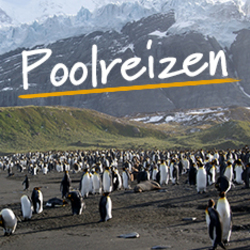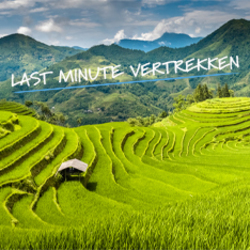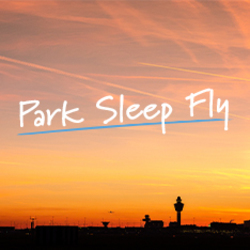Maak kans t/m 5 januari
BekijkActivities
- Culture
- Cultural Wonders
- Culture Bestsellers
- — Visit Unesco World Heritage sites: Pogradec, Butrint, Berat and Gjirokaster — Journey through the beautiful Albanian Riviera — Discover historic monuments, including Durres Amphitheatre and Korce Museum of Medieval Arts — Explore Llogora National Park
Food
-
1
Start Tirana
The tour starts at our hotel in Tirana, the capital of Albania. There will be a welcome briefing at 4.30pm, followed by an orientation tour of the renovated New Bazaar, very close to our hotel. Accommodation: Hotel Europa (or similar)
-
2
Visit Elbasan Fortress en route to Pogradec
After an early breakfast, we take a walking tour of Tirana, which was made the capital of Albania in 1920, visiting the remains of an old castle; the modern Pyramid of Tirana, which was opened as a museum and served as a NATO base during the Kosovo War; and the Prime Minister’s Office. We will also visit Bunk Art 2 or 1 (depending on seasonality), which is an Albanian history museum inside a preserved, Communist-era nuclear pit bunker. Afterwards we reach the Blloku neighbourhood, where villas were once occupied by members of the Politburo, a former leading group of the Albanian Labour party. It is now the nightlife hub of Tirana, home to trendy bars, cafes and clubs. We then drive to Pogradec (approximately 2hr 30min), making a short stop at the 15th-century fortress of Elbasan. Pogradec is one of the most charming resort cities in Albania, next to beautiful Lake Ohrid and surrounded by mountains. On the way we will stop in Lin to walk through the village and have a coffee in one of their bars. Accommodation: Hotel Pogradeci (or similar)
-
3
Transfer to the artists village of Voskopojë; continue to Korçë
This morning, we drive for about an hour to Voskopojë Village (formerly known as Moscopole), an important and well-known centre for the arts, where many talented Albanian icon painters worked. The village has suffered over the years, with many treasures stolen during the second half of the 18th century and this continued during the world wars. We take a 40-minute walk to visit one of the oldest churches representing Voskopoja religious art. Another drive (approximately 30 minutes) takes us to Korçë, the largest city in southeast Albania, which sits at the foot of Moravia Mountain, 2,625ft (800m) above sea level. This city became an important trading and handicraft centre in the 18th century and has also been referred to as the City of Museums. Make sure to try the renowned local beer. *Please note during March, April, October and November, the visits to the Medieval Arts Museum in Korcë and the visit to Voskopoja will be done in reverse order due to opening times of the museum. Accommodation: Hotel Christi Borova/Hotel Kocibelli (or similar)
-
4
Drive via the mountain village of Ersekë to the gastronomic city of Përmet
Our drive through the mountains today is truly spectacular, with sweeping views across the Gramos and Nemercka mountains. Along the winding route, we enjoy a short stop in Ersekë, which at 3,445ft (1,050m) is the highest town in Albania. This 17th-century town is surrounded by the beautiful green pastures of the Gramos Mountains. Continuing to beautiful Përmet, we make a stop at the hot springs, where we have time to relax and swim. After quite a long day (approximately five hours' drive in total), we arrive in Përmet, in the heart of the white mountains on the Vjosë River. This evening you’re in for a treat: Përmet is celebrated for its food and wine, including gliko sweets and raki. Accommodation: Hotel Alvero (or similar)
-
5
To Gjirokastër via the characterful village of Dhoksat
We drive (approximately two hours) to the beautiful town of Gjirokastër, pausing at the traditional village of Dhoksat for a homecooked lunch. In the afternoon, we enjoy a guided visit around mountainside Gjirokastër, where cobbled streets wind between old houses with interesting architectural features including medieval towers. The castle is the standout landmark here, with panoramic views of the landscape. We also visit Skenduli House, a centuries-old building and magnificent example of the local architectural style. Please note: Lunch with the local family can sometimes be changed to dinner dependent on their availability. Accommodation: Argjiro Hotel/Hotel Bineri (or similar)
-
6
Visit Butrint, continue to Llogora National Park
After an early breakfast, we travel to Unesco-listed Butrint National Park, an area that rose to fame in the fourth century BCE when it became home to a sanctuary dedicated to Asclepius, god of medicine. The sanctuary was located on the south slope of the acropolis (hill) and was visited by worshippers to be healed. The city developed during the Roman period, but fell into decline after an earthquake and was abandoned towards the end of the Middle Ages. After our visit, we drive to Llogora National Park stopping along the coast on the way. Accommodation: Llogora Tourist Village Hotel (or similar)
-
7
Llogora National Park walk and visit Apollonia
After breakfast, we take a walk in Llogora National Park, possibly reaching Caesar’s Field. Yes, Julius Caesar crossed into today’s Albania in his battle against Pompey, which was won in this territory. Next, we stop at the wonderful ruins of Apollonia (approximately 1hr 30min to two hours' drive). Originally occupied by Illyrian tribes and then colonists from Corfu and Corinth around 600 BCE, Apollonia flourished in the Roman period and was home to a renowned school of philosophy (emperor Augustus studied here) but began to decline in the third century CE when its harbour started silting up as a result of an earthquake. After Apollonia, we transfer for just over an hour further inland to the Unesco-listed town of Berat, where we spend the night. Accommodation: Hotel Onufri/Berati Castel Hotel (or similar)
-
8
Day in Berat
Today is dedicated to Berat, the gem of Albania. This morning, we enjoy a guided tour around the old district, with pretty white buildings perched on the hill amid pine forests. We walk through the narrow cobbled streets and reach Berat Castle on the slopes of Mount Tomorr, where we are rewarded with breath-taking views (and we find out why Berat is known to Albanians as the City of a Thousand Windows). Within the castle walls are dwelling houses and the Onufri Museum (Museum of Iconography), which we have time to visit. On the way back to the hotel, we also visit the House of Cac Dollani. The rest of the day is free to explore the town. Accommodation: Hotel Onufri/Berati Castel Hotel (or similar)
-
9
Drive to amphitheatre and port of Durrës; continue to Krujë
From Berat, we drive to the port of Durrës (approximately two hours), the second-largest city in Albania and home to the largest amphitheatre in the Balkans. The amphitheatre dates to the second century CE, seats 15,000 people and contains an early Christian crypt with rare wall mosaics. The city was colonised by people from Corinth and Korkyra in 627 BCE and was named Epidamnus, but later became Dyrrachium. We then drive to the medieval citadel of Krujë (approximately 45 minutes), where the national hero, Skanderbeg, led the resistance against the Ottomans. He kept them from crossing into western Europe for 25 years, earning the title Champion of Christ. We check in at the hotel and in the afternoon visit the Skanderbeg Museum, from which you can enjoy inspirational views to the Adriatic Coast. Accommodation: Hotel Panorama (or similar)
-
10
Tour of the Kruja Bazaar; transfer to Tirana
After breakfast, we have time to wander through the medieval bazaar of Krujë, which is stocked full of souvenirs and handicrafts. After, we begin our return journey home (check the Joining Instructions in the Trip Notes for more information about catching your return flight).





































